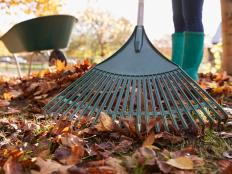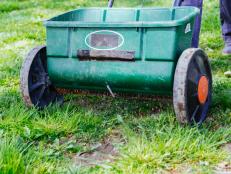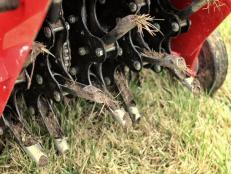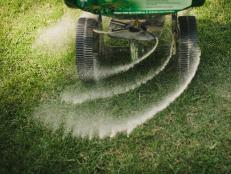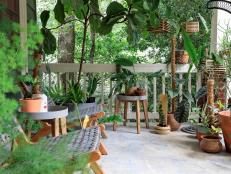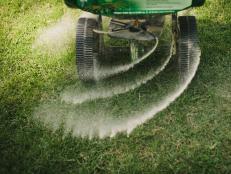Two-Toned Lawn

Gardeners living in areas where it freezes in the winter -- which is virtually everywhere north of Zone 8 -- often have a two-toned lawn, so named because the lawn is both green and brown at the same time.
There are usually two reasons for the two-toned lawn, says master gardener Paul James. "One is that many homeowners desperately want a green lawn year-round so they over-seed warm-season Bermuda or zoysia lawns, which go brown during the winter months due to dormancy, with a cool-season grass that stays green throughout the winter months. In nearly all cases, reseeding must be done every year, and unless the seed is spread uniformly, a two-toned lawn is inevitable."
If you reseed on a regular basis and at the right time for your area, you can achieve the uniformity you desire. Bear in mind, though, that with this kind of lawn, you may extend the mowing season by at least few weeks and you'll have to continue watering for perhaps a few months.
The other reason for a two-toned lawn has to do with growing conditions, especially in landscapes with lots of mature trees. Throughout the country and in older neighborhoods in particular, parts of the lawn may be in full sun, while parts may be in the shade cast by large trees. This creates a real problem because warm-season grasses like to grow in full sun and don't like to be in the shade, and cool-season grasses love the shade, but they don't really like growing in the blazing sun. As a result, people wind up with two-toned lawn.
In this type of situation, there is no easy solution, says James. "You can open up the canopies of the trees by removing several of the large branches to let more of the light in, you can limb up the trees to achieve essentially the same effect, or you can forget trying to grow grass under the trees all together and opt instead for rugged, shade-tolerant ground cover, or maybe just a bunch of mulch," he says. "And in fact, that's often the best solution, especially since all the water and nutrients are quickly sucked right out of the soil by the dense tree roots, making it next to impossible to grow grass beneath them anyway."






